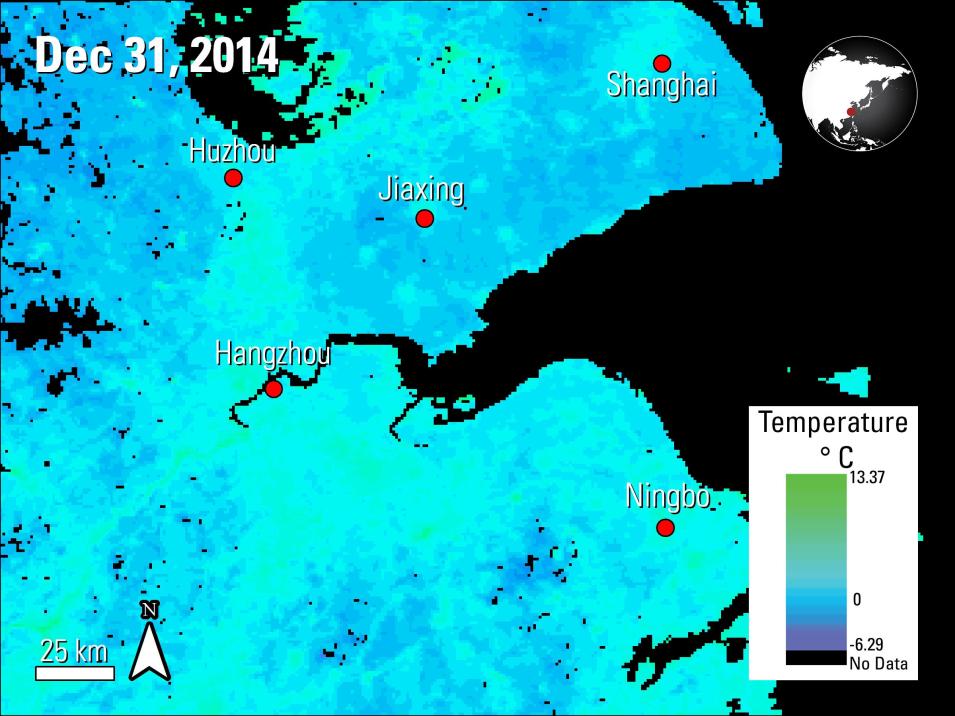Science Objectives
The authors use statistical analysis to study the difference between the two measurements for different land cover types in the northern part of the Zhejiang Province of Southeast China from January 1, 2014, to December 31, 2014.
Instruments Used
The land cover types are determined by weather station locations and then are classified as impervious surface, water, or vegetation. The authors use the MODIS Reprojection Tool (MRT) to re-project and mosaic the Terra MODIS LST data. Several tests are performed to determine if there is a relationship between air temperature and LST, to observe the effect of seasonality, to understand the correlation with spatial distribution and altitude (below 1,200 m) of the weather stations, and to discover the optimal spatial extent where LST agrees with air temperature.
Major Findings
The authors find there is a better agreement of LST and air temperature in nighttime measurements. Relative to season, they find vegetated areas show good agreement between LST and air temperature and that the hot season, May to September, has the weakest correlation. Overall, the correlation coefficient between LST and air temperature varies greatly between different seasons and different land types, but seems to have no relationship with altitude. The authors state that results from this study will aid in building a model to derive air temperature from remotely sensed data in the future. They also believe future research could improve the results by observing MODIS data at different overpassing times, obtaining air surface temperature data from different years, and studying higher elevation areas.
References
Publication Reference
Sheng, Y., Liu, X., Yang, X., Xin, Q., Deng, C., and Li, X., 2017, Quantifying the spatial and temporal relationship between air and land surface temperatures of different land-cover types in Southeastern China: International Journal of Remote Sensing, v. 38, no. 4, p. 1114–1136. doi:10.1080/01431161.2017.1280629
Image Reference
Granule IDs
- MOD11A1.A2014365.h28v05.006.2016212043911
- MOD11A1.A2014365.h28v06.006.2016212043908
DOI
- 10.5067/MODIS/MOD11A1.006
Remote Sensing of Urban Farms
Remote sensing is a valuable agricultural tool. But how useful is it for the urban farm community?


